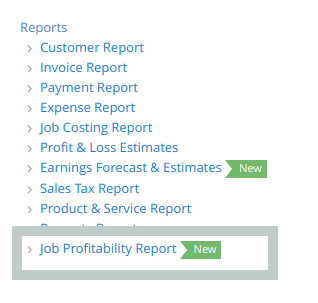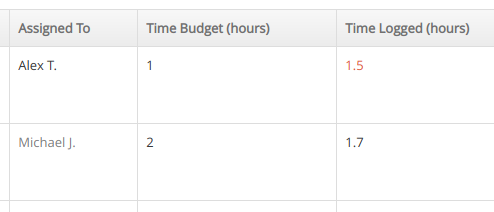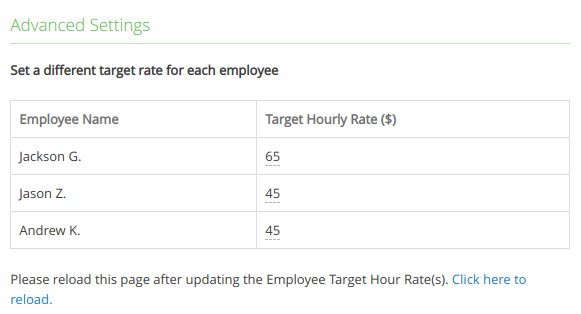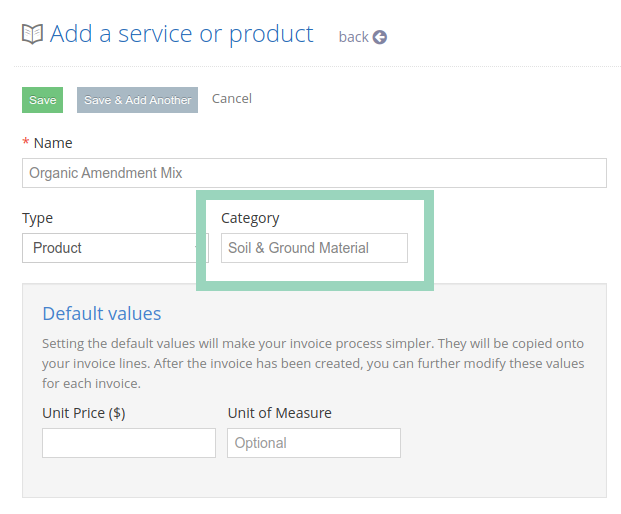The Job Profitability Report is a powerful tool designed to help you analyze your company’s data—including jobs, timesheets, and pricing—to identify which jobs are not meeting profitability expectations. By utilizing this report, you can make informed decisions to keep your profitability on track.
To access this report, navigate to the Sitemap View and click on the “Job Profitability Report” link.

Setup
First, set up a default target hourly rate for your employees. This is how much you expect each employee to generate while working on your jobs.

The system will estimate the earnings from each job, and use that to determine how much time you should spend on these jobs to maintain profitability (time budget). This report will show you which jobs are taking more time than their target time budget. In order to maintain profitability, you should look to reduce the amount of time spent on these jobs or raise your prices accordingly.
* If you are not generating your invoices from your jobs, this report may not be accurate.
You will see which jobs have exceeded their time budget as soon as you generate the report.

How is time budget calculated?

How is time logged calculated?
Yardbook will find all the timesheets recorded for a job, and add up the hours.
Interpreting the Results
Jobs Exceeding Time Budget: The report highlights jobs that are taking more time than their allocated time budget.
- Raise Prices: Adjust your pricing to reflect the actual time investment.
- Reduce Time Spent: Find efficiencies to complete the job faster.
Advanced Settings
You can specify a different target rate for each employee, giving you additional control and accuracy while generating this report.

Display time budget on the job page
Enable this option to display the time budget in the Job Details Page.

Automated Alerts
Enable automated monitoring and receive a profitability report daily or weekly via email.

Exclude Material Costs and Focus on Labor Costs
To exclude material costs from the estimated earnings calculation, follow these steps at the product level:
- Go to your Product Catalog.
- Select the product associated with the material cost you wish to exclude.
- In the Category field, add the word “material” (Ex: “Soil & Ground Material”).
When a product category includes the word “material”, it will automatically be excluded from the earnings calculation, allowing you to focus exclusively on labor costs.

Suggested Categories for Landscaping Materials
Here are some suggested categories for your landscaping materials:
- Soil & Ground Material: Includes soil, compost, and fertilizers.
- Mulch & Covering Material: Covers mulch, bark, and landscape fabric.
- Stone & Gravel Material: Gravel, decorative stones, flagstone, and boulders.
- Hardscape Elements Material: Pavers, retaining wall blocks, and concrete mix.
- Edging & Borders Material: Edging materials for defining spaces.
- Plants & Greenery Material: Trees, shrubs, flowers, sod, and ground covers.
- Support & Structural Materials: Trellises, stakes, and landscape fabric for support.
- Irrigation & Water Material: Irrigation systems, sand, and drainage solutions.
- Lighting & Outdoor Material: Outdoor lighting and decorative elements.
- Pathway Material: Materials for pathways, such as gravel, pavers, and flagstone.
By categorizing your products using these suggestions and including the word “material” in the category name, you can efficiently manage your product catalog and ensure accurate earning calculations.
